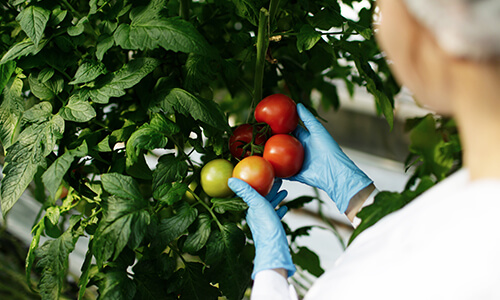Tuning Chlorophyll – Improvement of light use
The improvement of light use efficiency by plants is potentially a game changer for boosting photosynthetic yields in the field. Photosynthesis is a hybrid system where photovoltaics is coupled to CO2 capture and carbohydrate chemistry.
Several studies have now shown proof-of-concept that some mutant plants with decreased chlorophyll content were more productive in the field delivering increased yields. Our teams from CEA and VU now propose to identify original chlorophyll tuning traits from the germplasm of mutant lines in studied species as factors to increase light use efficiency by “tuning” the chlorophyll based on exploiting natural variation.
The two main stages of photosynthetic processes inside the chloroplast are shown in the simplified schematic.
1. Light reactions
Light reactions take place on the thylakoid membrane, where energy from the sun is harvested to energise electrons gained by splitting water in order to create adenosine triphosphate (ATP) and NADPH. This process releases oxygen as a “waste product”.
2. Fixation(Dark) reactions
Fixation (Dark) reactions take place where ATP and NADPH serve as energy, and reducing power respectively, during fixation of CO2 and carbohydrate production within the Calvin cycle.
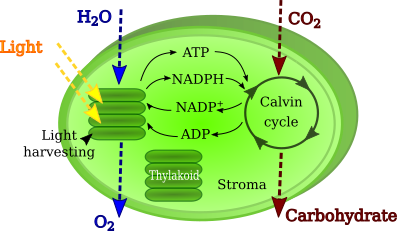
Reduced leaf chlorophyll content is a strategy to increase light-use and carbon gain of a crop canopy. Manipulation of chlorophyll levels should increase the amount of light through the depth of the canopy, and increase the light energy distribution, available for photosynthesis. The Photosystem II core, containing the reaction centre where electron transfer takes place, contains the light harvesting complexes (LHC) that transfer light energy to the single chlorophyll found in the reaction centre. Reducing the amount of LHC relative to photosystems, provides an avenue to optimise light interception per leaf area and improve quantum efficiency of PSII. Screening a range of mutant plants with different chlorophyll levels and distribution, aims to identify smarter canopy candidates. We will also use knowledge-based directed chlorophyll tuning to increase light use efficiency and boost CO2 fixation.
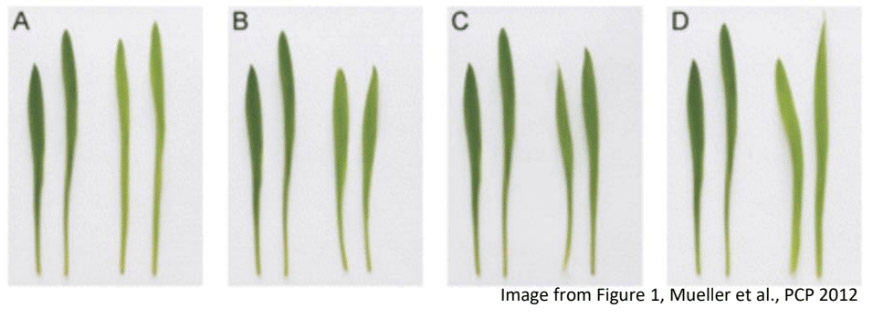
Read more about
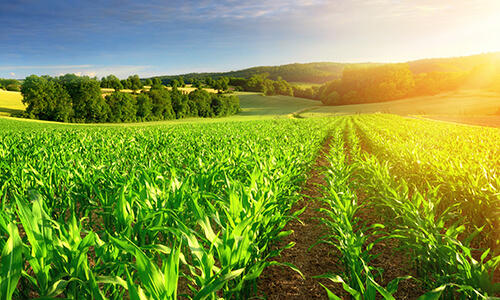
Photosynthesis
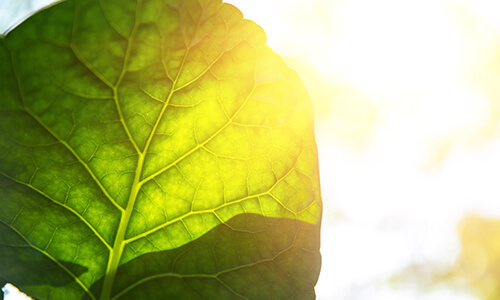
Calvin Benson cycle
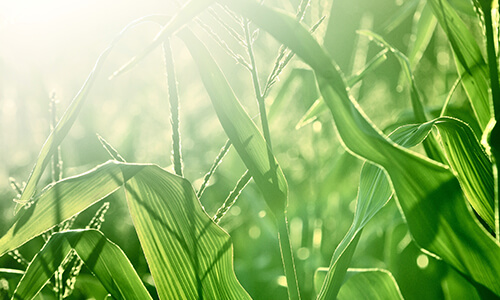
Kinetics
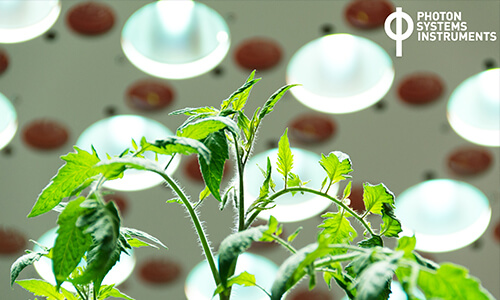
Phenotyping
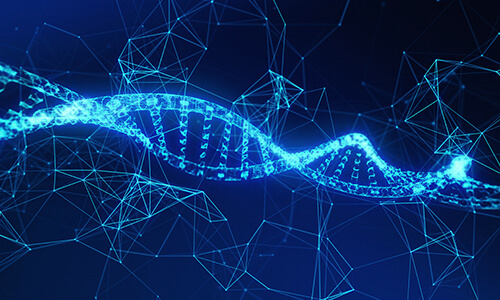
Data modelling
